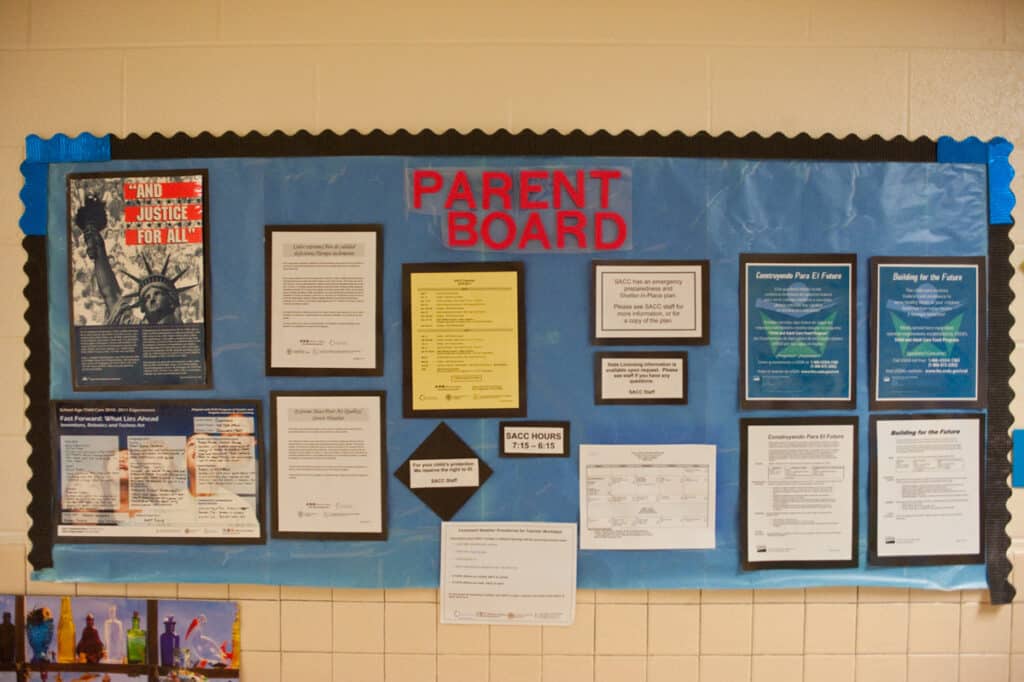
As educators, we know that communication between school and home is hugely important to a child’s success in school. When school leaders, teachers, and other school staff respect parents* and share information with them openly and frequently, parents are more likely to trust and work with the school to support their child’s learning.
Leading the effort to build strong, trusting relationships with parents is a crucial task for school leaders. Having good lines of communication with parents already in place can make a huge difference when a school is working on discipline issues. Here are some strategies school leaders can use to build positive relationships with parents at the beginning of the school year.
*About the term “parent”
Students come from a variety of homes and family structures. Many children are raised by grandparents, siblings, other relatives, and foster parents. “Parent” is used here to refer to and honor anyone who is the child’s primary caregiver.
Observe how adults at your school talk about and behave toward students’ families:
You can deliberately address staff’s beliefs about families by:
Reach out with a letter that welcomes families and conveys that the entire school community cares about their child’s success. Encourage teachers to send similar welcoming notes to their students’ parents. Teachers might introduce themselves and invite parents to share a few insights about their child. You can make this easier for teachers by supplying ready-made postcards or notecards that they can customize.
From time to time throughout the year, send additional letters to parents. Doing so will keep the lines of communication open and remind parents that your school cares about their child. In your letters, always extend an invitation to parents to share their opinions and concerns.
A couple of topics you might address:
Encourage teachers to share positive news and invite parent input throughout the year. Support them by suggesting simple ways to connect with parents, such as quick phone calls or brief notes.
Holding conferences during the first weeks of school helps establish good communication and trust. The goal of these first conferences should be for teachers to start building a positive relationship with parents. Teachers should use this time to gather information that could help them teach each student well.
For instance, they might ask parents to share:
It’s impossible to overstate the importance of this point. When school adults listen, parents feel respected and known, and the school gets important information. All of this paves the way for successful school-home collaboration on discipline issues and other matters.
Whenever you meet with parents, aim to listen more than you talk, and advise teachers to do the same. You might also consider a time-honored idea: the suggestion box. Placing suggestion boxes at key locations throughout the building (front lobby, main office, family resource room, etc.) gives parents a low-pressure way to communicate their ideas and concerns.
The better parents understand your school’s discipline approach, the more fully they can help support positive school behavior in their children. Plan to communicate frequently—and leave plenty of room for questions. For example:
First, name the goals of your school’s discipline approach and its schoolwide rules. Then highlight the practices that school adults use to support children in choosing and maintaining positive behaviors. For example, if your school uses Responsive Classroom practices such as Interactive Modeling and positive teacher language, you could mention those. Describe how teachers use community-building practices in classrooms, and how those practices are extended throughout the school.
Give parents an overview of your school’s responses to misbehavior. Here are a few points you might want to emphasize:
Highlight key aspects of your school’s discipline work at PTA/PTO meetings and publish an overview of your school’s approach to discipline in the parent handbook. (See a sample of such an overview from the book Responsive School Discipline.)
In addition, look for less formal communication opportunities throughout the year. For example, offer parents coffee and invite them to converse about aspects of school discipline. You might also write short articles about discipline in your school newsletter.
Varying your means of communication helps avoid subjecting parents to information overload. You’re also more likely to reach parents with different preferred ways of receiving information if you use a few different ways of communicating.
Communication with parents will help ensure effective discipline in your school. As a leader, it’s up to you to model good communication, get it going early in the school year, and keep it going all year long.
Looking for more strategies and resources for connecting with parents? Strengthening the Parent-Teacher Partnership takes an in-depth look at how you can stay in touch digitally, hold productive parent-teacher conferences, and get parents more involved in their child’s learning. Additionally, check out our Strengthening the Parent-Teacher Partnership webinar, which features an illuminating conversation with a panel of Responsive Classroom educators, including Jane Cofie, the book’s author.
You can also find our most recent articles on working with families here.
Chip Wood has been an elementary school teacher, principal, district curriculum director, and teacher educator during his forty-year career in education. He is the author of Yardsticks: Children in the Classroom Ages 4–14 and coauthor of Responsive School Discipline: Essentials for Elementary School Leaders.
Babs Freeman-Loftis taught elementary physical education for fourteen years before moving into administration as an assistant principal for nine years. She is the coauthor of Responsive School Discipline: Essentials for Elementary School Leaders and The Responsive Classroom Assessment Tool for Elementary Teachers.